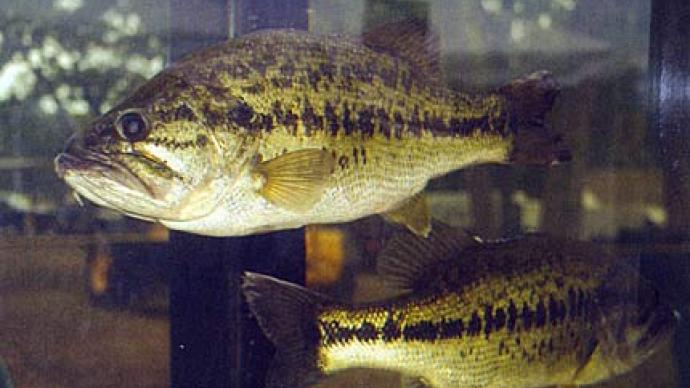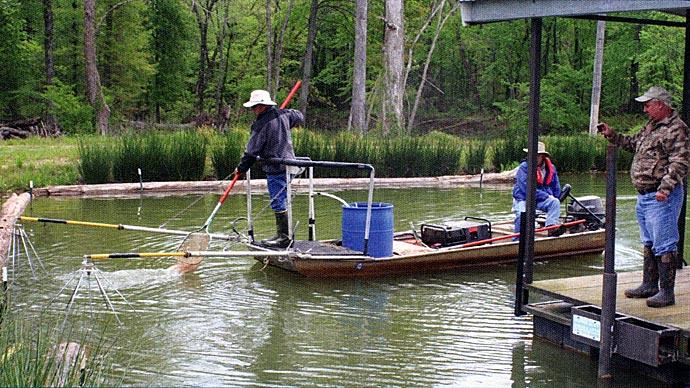
Many of us have attempted to develop awesome bass ponds. Or lakes, for that matter. A key strategy to do this has always been to set up a massive forage base for the bass. Most biologists will testify it takes around ten pounds of baitfish for a bass to gain one pound. A key component of the most successful strategies is to let the forage base grow up and expand before introducing bass into the waterway. Some of us have waited as much as three or four years, during which time, forage like fatheads and crawfish, and maybe bluegill are introduced, engendered, grow, and expand in numbers. Then finally, after waiting anxiously for what seemed like an interminable time, bringing on the largemouth.
What happens then? Does the waterway take off and become established as an excellent northern fishery? Is it soon producing the occasional five-pounder here in the north, say in Montana? Or anywhere in the north, for that matter?
In fact, the properly nurtured, normal northern waterway does result in rapid growth of bass. But, this happens for just a few years. Then, it tails off. If you've put bluegill in, their population explodes. You don't have a clue as to why the bass can't control these bluegill. Southern bass seem to handle bluegill just fine. Why not up here? And, the fatheads disappear.
Literally, within two years you can't find a fathead minnow! And the bass end up eating each other—instead of those bugger bluegills! Eventually there's a wealth of small bass, and a ton of even smaller bluegill. The fatheads and crawfish have disappeared.

Now please note, we all know that security cover is fundamental. As goes the habitat, so goes what lives in it. You can't expect forage to survive on a flat, football-field surface. The fatheads in particular are really easy prey. Even the relatively slow redear sunfish can catch a fathead without working up a sweat. For yellow perch and bass, the fathead is like eating popcorn! Black Crappie, too—for them the fathead is like dessert at a fancy restaurant! Really tasty, and worth the relatively low price—depending on the restaurant, I guess.
In the meantime, the bluegill conundrum continues. Why can't these northern bass figure out how to utilize this tremendous bluegill resource? The answer is not too hard to explain. In southern waters, bluegill tend to participate in what we call rolling spawns. That means each bluegill may spawn three to five times each year, depending where they live in the nation. Bluegills love warm waters, even temperatures considered almost hot. In Texas, for example, a pond may have perfect bluegill temperatures for nine or ten months per year, while here in Montana, we may have 60-80 perfect bluegill growing days. What that means is that we have one, maybe two spawns of bluegills. Then, since those fish are hatched in mid-summer, you can understand they'll grow fast, since the rest of the base of the food chain is primed for them to feed and grow quickly. A fast-growing bluegill, not competing with spawn after spawn of potential siblings and cousins over a longer period of time, stands a significant chance of growing larger, faster. Since the bluegill season is short in the north, compared to our southern friends, bluegill have a competitive advantage. The consequence of that advantage is an age class of these special sunfish that have a decreased risk of being eaten because they outgrow the window of opportunity for Largemouth bass. The quandary is missing a chance for bluegills to be a significant part of an important food chain while Largemouth bass overeat the rest of the food chain that can't successfully reproduce and recruit quickly enough to be a sustaining population.
But let's go back and think about those fatheads. If they are so vulnerable to every underwater creature with a big enough mouth, what can we do to change that seemingly-inevitable equation?
Here on Fish Fry Lake, my personal laboratory, we have some floating islands. And, that's an understatement, since floating islands is what we do. It happens that fatheads lay their eggs on the underside of firm structures, like floating islands. It also happens that structure can be readily suspended from the islands—structure that bass can't penetrate, but the much smaller fatheads can! When we looked at the matrix of these islands, we realized they are the perfect media for baby fathead minnows to hide. It also happens that there are specific forms of aquatic vegetation that fatheads vector with, for good reason—because it provides both food and security for them. Even bullfrogs can barely hunt it! And, if you've never looked inside the stomach of bullfrogs, they'll eat anything a bass will, plus whatever they can catch on land. Bullfrogs have an advantage.
Today Fish Fry Lake is a very easy place to catch fish. And in fact, the amazing fact, this includes big bluegill. For example, last September ten kids caught 631 fish in four hours. In and of itself, that's not really the most amazing story. But when you know the rest of the story, it takes on a new relevance. The kids caught a wide range of age classes of bluegills. Roughly one nine or ten-incher out of every five fish! And these were urban kids, not the savvy, calculating country kid that has a wealth of natural experience under their young belts, but city kids, some of whom had never even seen a live fish close up, except maybe in some shopping mall aquarium, much less catch one on the business end of a fishing pole! We are talking kids that are whizzes on a computer keyboard, but put them in front of fish and they don't know which way to turn the handle of a spinning reel. The resulting snarls of monofilament can definitely complicate fish harvest, as well as the attention span of a child!
The minnows are a marker. If you can see them swimming along shore in your waterway, something good is happening. If you never see them, they are gone. So, re-think the environment you have created. This is not rocket science. Well, not quite. It's fisheries science. Many remarkable minds have truly focused on this question. How do you design for a sustainable population of a highly vulnerable prey species like fatheads in the presence of highly effective predators like Largemouth bass?
Here's my answer:
Step outside the box of your conditioned imagination. Sorry, but the hard fact is that all of us are vulnerable to this. Me, too! Test, experiment, and above all, be objective.
But for now, for today, add structure. When you go back and look through pages of back issues of Pond Boss magazine, you will see a major emphasis is focusing on habitat for the species we expect to thrive. Not only do we strive for the best habitat for target species, we also focus on the little things, like habitat for the tiniest of the tiny, like fathead minnows. Make sure your habitat does not chew up oxygen. Here in the north, there's never enough oxygen in our water. I take that back—seasonally, there is enough dissolved oxygen, but occasionally there isn't. And just a few minutes of deficit kills every fish in your waterway. Ironically, winter time is a big time where oxygen can take a hit. That should wake you up! If it doesn't, then I suggest you take on another hobby!
Note, crawfish are even more dependent on dissolved oxygen, because they live on the bottom of a waterway. If they are thriving, your waterway is thriving.
If you can figure out how to establish and protect a long-lived population of fathead minnows in the north, and ways to make sure your crawfish have what they need without being annihilated in a few months, you might be the one to fight through the box of logic that keeps people from moving their fishery to its highest levels.
So, there you have it. You now have a concept and the motive to gauge whether you have it right. If fatheads and crawfish are thriving in your waterway, in the presence of game fish like Largemouth bass, you are an exceptional environmental steward. Is there anyone out there that meets this description?
Reprinted with permission from Pond Boss Magazine



